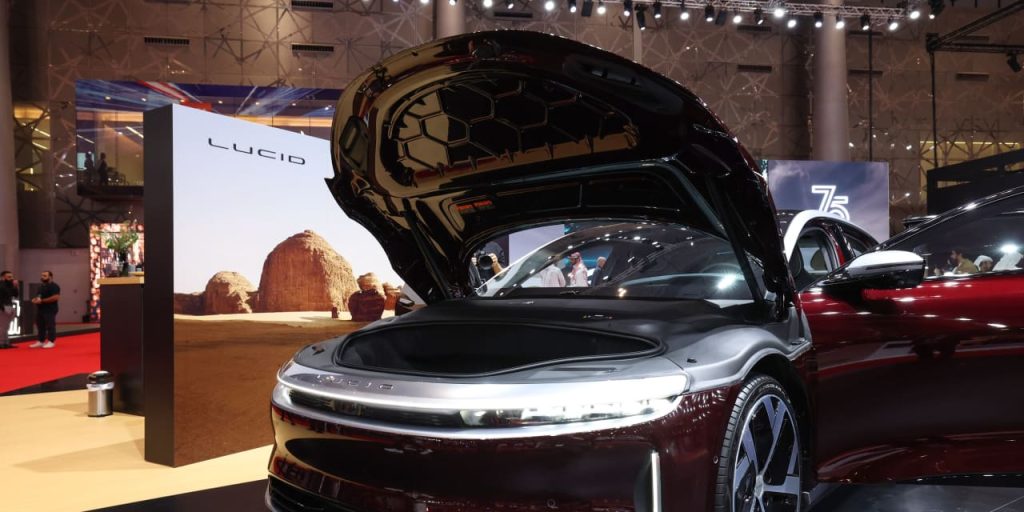Lucid
reported third-quarter sales that missed Wall Street estimates. Production guidance for 2023 was lowered too, sending the stock downward shortly afterward.
Tuesday evening, the EV start-up announced a third-quarter per-share loss of 28 cents from sales of $138 million. Wall Street was looking for a loss of 40 cents from sales of about $178 million, according to Bloomberg.
The operating loss amounted to about $753 million, better than the $830 million analysts projected.
A smaller loss is great, but it came from lower sales. What is more, Lucid reduced its forecast of 2023 production to a range of 8,000 to 8,500 cars from about 10,000.
Shares were down 2.3% in after-hours trading. Coming into the earnings report, Lucid shares had been badly beaten up. Through Tuesday trading, Lucid shares are down about 44% over the past six months while the
S&P 500
and
Nasdaq Composite
were up about 6% and 11%, respectively.
Part of the reason for the decline is investors’ worries about slowing EV demand after weak earnings reported by Tesla on Oct. 18. That report was followed by
Ford Motor
(F) and
General Motors
(GM) slowing EV-related spending and a weak forecast for fourth-quarter sales from EV supplier
ON Semiconductor
(ON).
A second negative factor has been weak production. Lucid produced 1,550 units in the third quarter and made about 6,000 in the first nine months of 2023. That leaves about 2,000 to 2,500 to make in the fourth quarter for the company to hit its full-year production guidance.
Lucid began the year expecting to produce roughly 12,000 vehicles.
Given the tough industry backdrop and lower guidance, investors want to see some improvement at Lucid, particularly regarding cash management.
The company used about $707 million in the third quarter, better than the $890 million in cash Wall Street projected and better than the $900 million it consumed in the second quarter of 2023. Wall Street projects cash use of about $900 million to $1.1 billion for each of the next few quarters.
Given all that, the third-quarter cash consumption is a positive.
But that doesn’t address the production problem. Analysts are projecting fourth-quarter deliveries of about 2,600 units, which is lower than Lucid’s production guidance implies. Deliveries and production should closely mirror one another.
Spear Invest founder Ivana Delevska told Barron’s that part of Lucid’s issue is its product lineup. Lucid sells higher-end vehicles that can cost more than $100,000. When
Tesla
(TSLA) started selling its high-price Model S in 2012, it was essentially the only EV seller of significance. Now the market segment is crowded with high-end sedans from auto makers including Tesla,
Mercedes-Benz
(MBG. Germany),
BMW
(BMW. Germany), and others.
Lucid management scheduled a conference call at 5:30 p.m. Eastern time to discuss results and the outlook.
Investors should brace for some volatility on Wednesday. Options markets imply the stock will move roughly 12%, up or down, after earnings are reported, which is the average move following the past four quarterly reports. Shares have moved up once and fallen three times over that span.
Lucid ended the third quarter with about $4.9 billion in cash and investments on its books. It ended the second quarter with about $5.5 billion.
Lucid’s market capitalization is about $10 billion. Adjusted for debt and cash, Lucid is worth some $6 billion, or about nine times estimated 2024 sales. Tesla trades for about 6.7 times estimated 2024 sales. Lucid peer
Rivian Automotive
(RIVN) trades for about two times estimated 2024 sales.
Write to Al Root at allen.root@dowjones.com
Read the full article here




